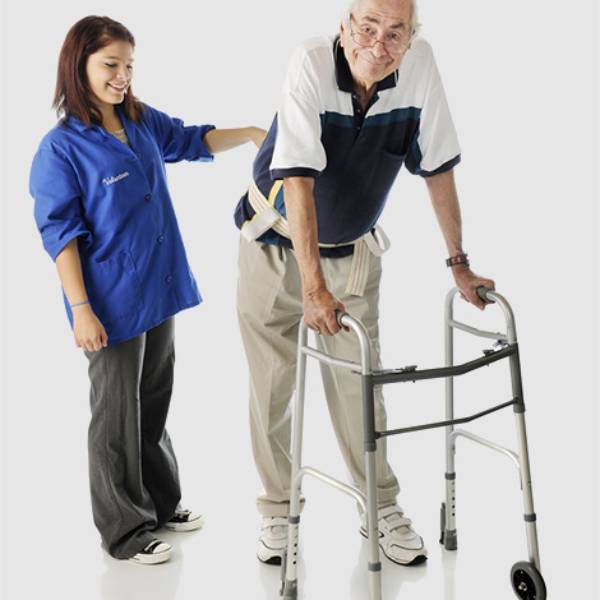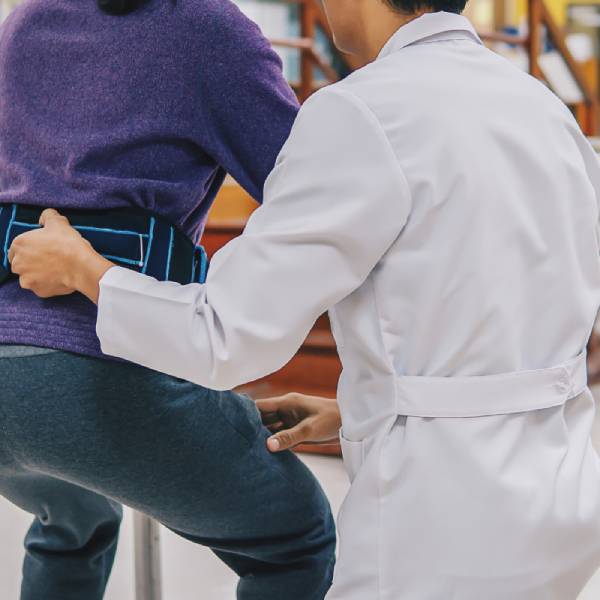Understanding How to Use a Gait Belt
Enhancing Safety and Mobility, One Step at a Time
Learning how to effectively use a gait belt can significantly enhance safety and mobility for those in need of assistance. A gait belt, typically crafted from durable and resilient fabric, provides a secure and reliable method for assisting patients or loved ones who may be experiencing mobility challenges. This invaluable tool is essential for caregivers, physical therapists, and healthcare professionals alike, as it plays a critical role in ensuring the well-being and independence of those they serve.

A Lifeline for Transferring and Stabilizing
The gait belt serves as a lifeline, offering invaluable support in transferring and stabilizing individuals with mobility difficulties. Its sturdy design and strategic placement around the patient’s waist or torso allow for a secure grip, enabling caregivers to provide the necessary support and guidance during transfers or while ambulating. By utilizing the gait belt correctly, caregivers can minimize the risk of injury not only for the patient but also for themselves, reducing the strain and potential for accidents that may arise during the course of their duties.
Mastering the Art of Proper Utilization
To ensure the utmost safety and effectiveness when using a gait belt, it is crucial to delve into the steps and best practices for its proper utilization. Through a comprehensive understanding of the techniques involved, caregivers can navigate the complexities of patient transfers and mobility assistance with confidence and expertise. By mastering the art of gait belt usage, healthcare professionals and loved ones alike can empower individuals with mobility challenges to maintain their independence and dignity, while also safeguarding their own well-being in the process.
Preparing to Use a Gait Belt
Before embarking on the journey of learning how to use a gait belt, it is imperative to ensure that you have the right equipment at your disposal. Carefully select a belt that fits the patient comfortably and securely, ensuring a snug yet non-restrictive fit that promotes both safety and mobility. Meticulously inspect the belt for any potential defects, such as frayed edges or broken buckles, as these flaws can compromise its integrity and put both the caregiver and the patient at risk.
In addition to selecting the appropriate gait belt, it is crucial to confirm that the belt is clean and sanitized, especially in clinical settings where hygiene is of paramount importance. A well-maintained belt not only promotes the health and well-being of the patient but also safeguards the caregiver from potential contamination. Moreover, take the time to clear the surrounding area, removing any potential tripping hazards or obstacles that may hinder smooth and uninterrupted movement, ensuring a safe and secure environment for both the patient and the caregiver.
Unlocking the Full Potential of the Gait Belt>
By understanding and adhering to these preparatory steps, caregivers can unlock the full potential of the gait belt, enhancing its effectiveness and maximizing the safety of both the patient and themselves. A meticulously selected and properly maintained gait belt, combined with a clear and hazard-free environment, creates a strong foundation for the successful implementation of gait belt techniques, enabling caregivers to provide the highest level of support and assistance to those in need.

How to Use a Gait Belt: Securing the Belt
The first step in mastering the art of using a gait belt involves securing it properly around the patient’s waist, a critical component that lays the groundwork for a safe and effective transfer process. With precision and care, position the belt snugly, ensuring its placement just above the patient’s hips, creating a secure anchor point for the upcoming maneuvers. Fasten the buckle with diligence, double-checking to ensure it is securely locked and unyielding, as a loose or improperly fastened belt can compromise the entire process.
Striking the Perfect Balance: Comfort and Effectiveness
While securing the belt, it is imperative to strike a delicate balance between comfort and effectiveness, ensuring the patient’s well-being is prioritized alongside the safety of the transfer. Allow for a space of two fingers to comfortably fit between the belt and the patient’s body, providing just the right amount of leeway for unrestricted movement and breathability. This strategic positioning not only ensures the patient’s comfort but also enhances the caregiver’s ability to provide adequate support without undue strain or restriction.
The Cornerstone of Safe Transfers
A securely fastened and properly positioned gait belt serves as the cornerstone of safe and efficient transfers, laying the groundwork for a seamless and controlled process. By adhering to these crucial steps, caregivers can ensure the utmost safety for both themselves and the patient, minimizing the risk of injury or discomfort. This meticulous attention to detail not only instills confidence in the caregiver but also fosters a sense of trust and security in the patient, creating an environment conducive to successful mobility assistance.
How to Use a Gait Belt: Assisting with Transfers
Knowing how to use a gait belt for transfers greatly aids in moving patients between positions. Stand facing the patient and grasp the belt firmly on both sides. Communicate with the patient to ensure they are ready to move.
Use your legs, not your back, to lift or support the patient, reducing the risk of injury. Maintain a stable stance and ensure the patient’s feet are firmly on the ground. This technique ensures a smooth and safe transfer, enhancing the patient’s comfort and security. Use a Belt Loop Buddy to lift or support patients with your legs, not your back. Maintain a stable stance, ensuring their feet are grounded. This technique ensures smooth and safe transfers.

How to Use a Gait Belt: Supporting Ambulation
When understanding how to use a gait belt for walking, the same principles apply. Stand beside the patient, holding onto the belt firmly. Encourage the patient to take small, steady steps.
Use the belt to guide and support their movement, offering stability and balance. Stay vigilant for any signs of dizziness or fatigue, and be prepared to assist them in sitting down promptly if needed. Proper guidance ensures that using a gait belt enhances mobility and independence. Use the Men’s Belt Buckle to guide and support movement, providing stability. Watch for dizziness or fatigue. Proper guidance enhances mobility and independence while using the belt buckle.
Best Practices for How to Use a Gait Belt
Adhering to best practices ensures you understand how to use a gait belt effectively and safely. Always communicate with the patient, explaining each step to reduce anxiety and build trust. Regularly inspect the belt for wear and tear to maintain safety.
Practice good body mechanics, bending at the knees and using your leg muscles. Never pull or jerk the belt, as this can cause discomfort or injury. By following these practices, you maximize the benefits and safety of using a gait belt. For the Best Belt usage, practice good body mechanics by bending at the knees. Avoid pulling or jerking the belt. These tips maximize benefits and ensure safety.
In conclusion, knowing how to use a gait belt is crucial for caregivers and healthcare professionals. From preparing the equipment and securing the belt to assisting with transfers and walking, each step requires attention to detail and proper technique. By understanding these aspects and adhering to best practices, you ensure the safe and effective use of a gait belt, enhancing mobility and independence for those in your care.
